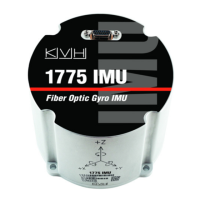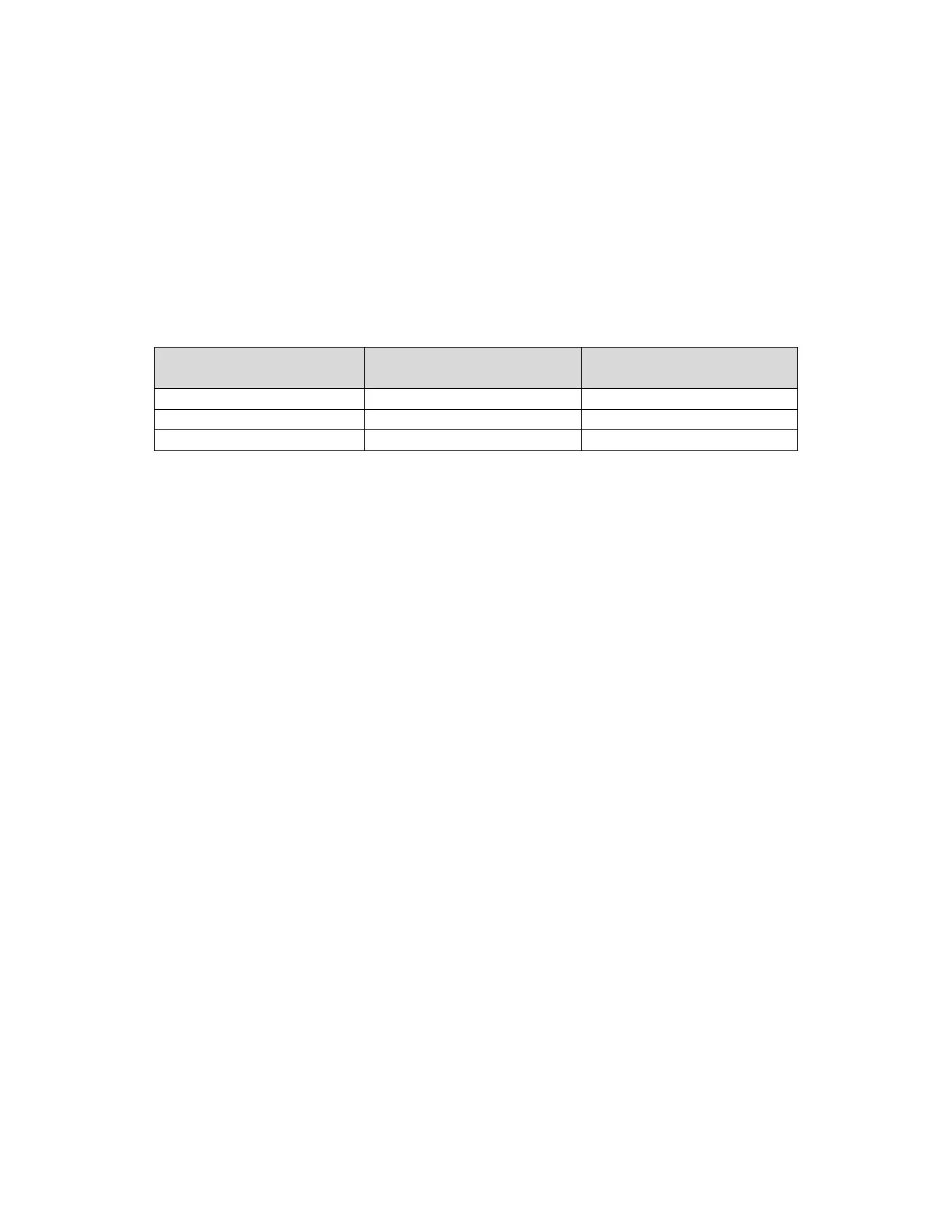This document contains proprietary information of KVH Industries, Inc. and neither this document nor said proprietary information shall be
published, reproduced, copied, disclosed, or used for any purpose without the express written permission of a duly authorized KVH
representative.
Both custom and built-in filters are executed at an input sample rate that is controlled by the
output data rate configuration (see the =DR command description for setting the output data
rate). When using a custom filter, the filter coefficients will not be automatically recomputed for
changes to the data rate. Therefore, if the data rate is changed to a value that changes the
internal gyro or accelerometer signal-processing rate, the filter should be adjusted to account
for the change to the filter’s input data rate. Please refer to the table below for the input sample
rate for which you should design your filter’s decimation factor (i.e., input rate/output rate)
according to the configured final data output rate.
Table 8-1: 1775 IMU Internal Sensor Sample Rates
(All values are listed in Hz units)
Gyro Signal-Processing
Rate (Hz)
accelerometer Signal-
Processing Rate (Hz)
NOTE: When the output data rate is externally controlled by the external MSYNC signal, the unit will default
automatically to use the Uniform Averager type filtering. However, the internal signal-processing rate and hence
the filter’s input sampling rate, is still controlled by the =DR command as shown in the table. Through the
=FC20 command it is possible to change the default filter in =MSYNC,EXT mode to instead use a custom filter.
The filter’s frequency response should be designed to prevent aliasing at the user-driven MSYNC rate.
Coefficients for all stages must be sent even if a lower order filter is specified. Unused filter
stages should be set with the all-pass coefficient values of a
1
=0.0, a
2
=0.0, b
0
=1.0, b
1
=0.0,
b
2
=0.0. That is, according to the equation above, y[n] = x[n].
The =FC20 command will automatically switch the filter type to <custom>. Therefore, after
defining a filter with this command the unit will respond to the ?FILTTYPE query indicating that
the custom filter is in use. Custom filter coefficients set with this command are stored in non-
volatile memory and last until they are either reprogrammed or overridden by another
configuration (e.g., =MSYNC,EXT, which defaults to using the Uniform Averager filter type or
the =FILTTYPE command to set a different filter).
NOTE: Depending on software revision, there may be a limit to the number of command line characters allowed.
Older software versions (1775 IMU ICB SDSP Rev. B or earlier) may limit the command line to 256 characters
including the <CR> and <LF>. Due to the length of filter coefficients, the input may need to be trimmed to fit the
input limit. Input with more than eight digits of precision are not required, especially if using exponential
notation, since typical float precision is not valid for more than eight or nine digits.

